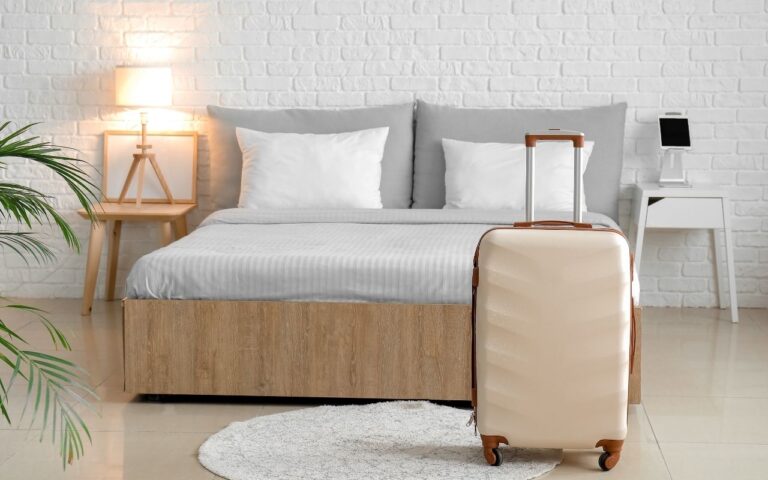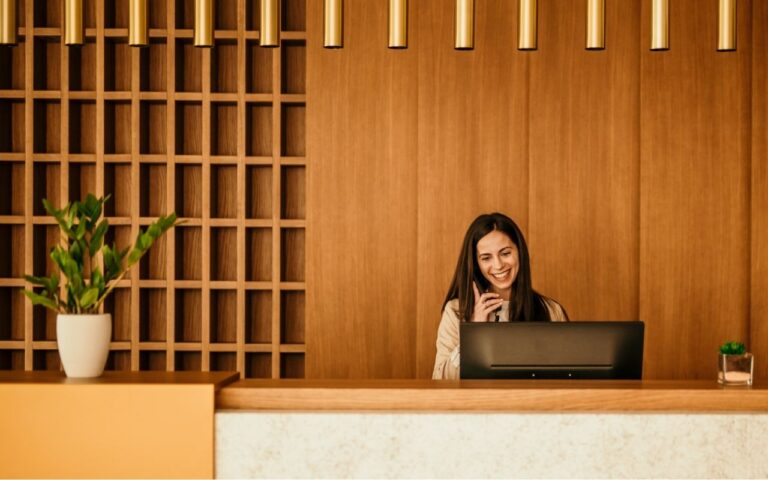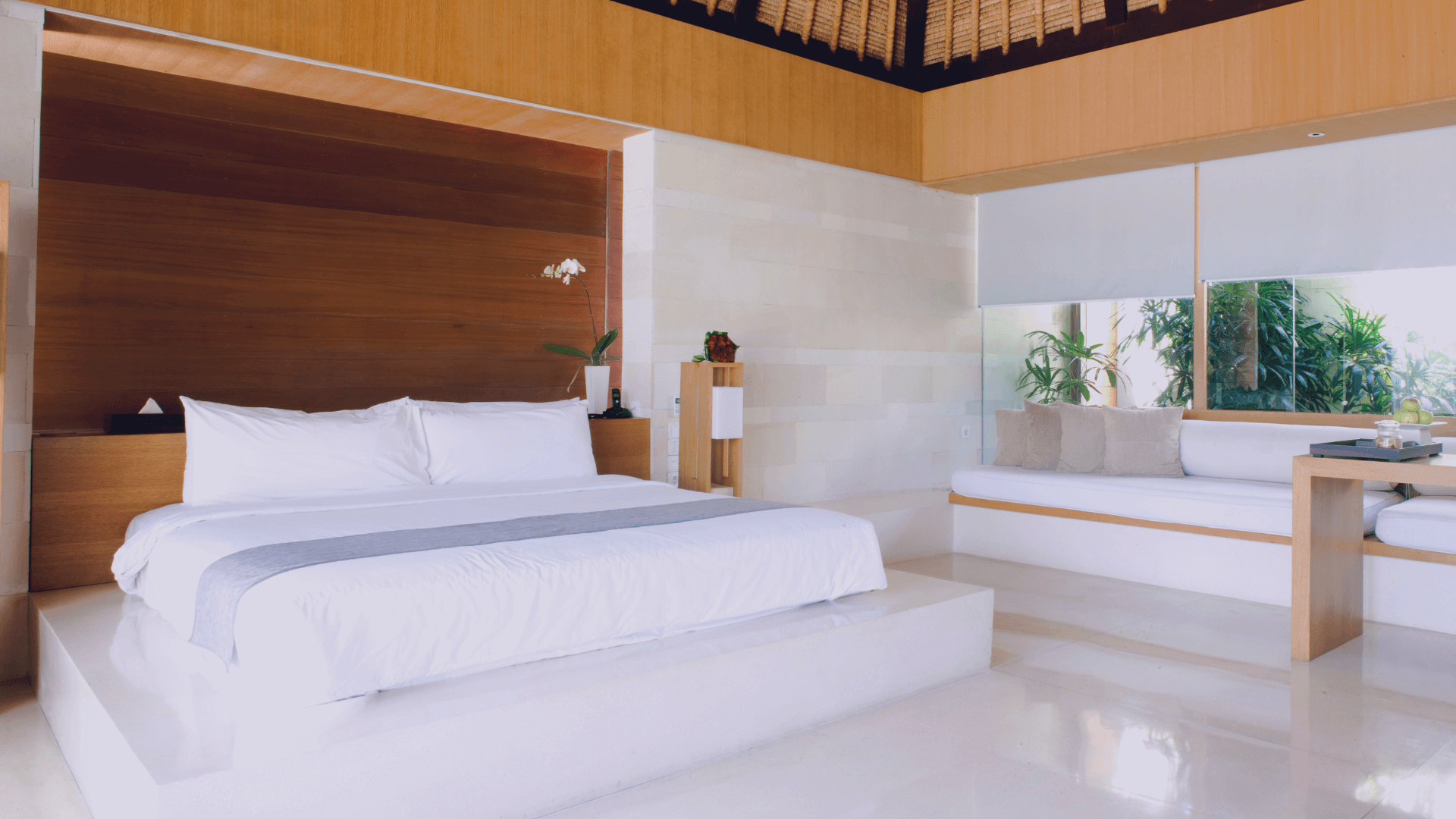The Sonder Operating Model: How It Can Transform Your Hotel
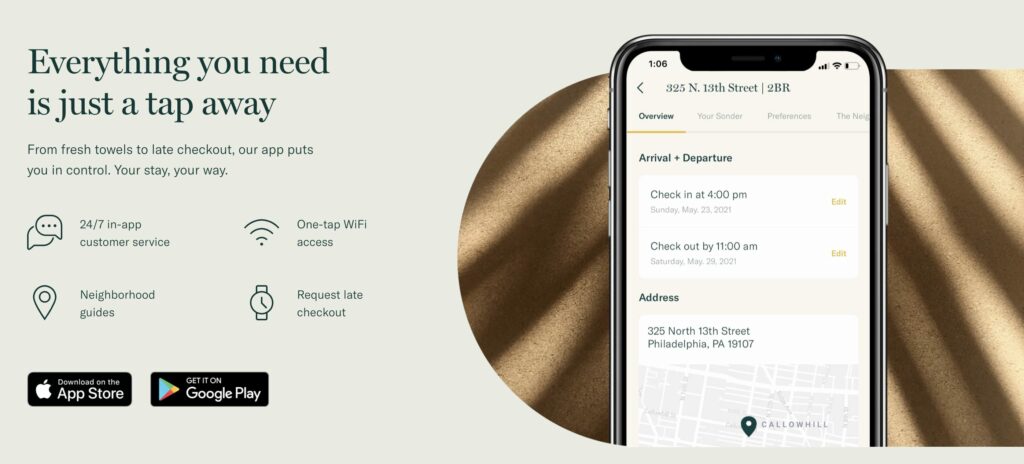
“Our goal is nothing less than to build the world’s most loved hospitality brand. We want to infuse hospitality with our passion for architecture, design, culture, and technology, and do so across all accommodation categories.”
Sounds like a pipe dream? It’s not—these are the words of Francis Davidson, CEO and co-founder of the highly successful accommodation business Sonder. With the company’s valuation exceeding $1 billion, clearly he and his team have done something right.
What Sonder pinned down is that the modern traveler expects the same level of ease, reliability, and convenience they enjoy at home. That’s why Sonder technology empowers guests to have control over their stay, giving them independence through contactless access, digital check-in, and in-home smart devices.
We’ve laid out why Sonder is so successful, the barriers to adopting a Sonder operating model, and how you can implement Sonder technology in your business to automate your processes and delight your guests.
The future of hospitality
Guests are becoming increasingly accommodation-agnostic. As hotels pop up on booking engines historically designed for short-term rentals, your prospective guests are less worried about the type of accommodation they book and more interested in the kind of experience they’ll receive.
So how can you keep up in the fast-paced, ever-evolving hospitality industry? One compelling solution is to follow the “Sonder model.”
The story of Sonder and its success
In 2012, Sonder co-founder and CEO Francis Davidson, then a college student in Montreal, decided to rent out his college apartment as a summer sublet. He ended up with $13,700 in revenue by September, and the vision for what would become Sonder was born.
Over the coming years, the company (which was then known as Flatbook) started generating millions in revenue. And at the beginning of 2022, just eight years after its launch, Sonder stock made its debut on the Nasdaq Global Select Market.
Sonder, which is now headquartered in San Francisco, reported $121 million in revenue in the second quarter of 2022 and raised $310 million in its most recent round of funding. The accommodation provider has appeared on the TIME 100 Most Influential Companies List, and currently operates real estate in over three dozen cities across ten countries, from New York City to Barcelona.
So why has Sonder seen such exponential growth and success? Its modern design and streamlined technology offers guests a consistent experience throughout, while its operating system is as easy to use as it is reliable, efficient, and scalable.
What is the Sonder business model?
Sonder offers short-term serviced apartments that combine the home-away-from-home feel, authenticity, and familiarity of Airbnb, all with the high-end design, reliability, and consistency of traditional hotels. And their distinctive operating style has been described as “the future of hospitality.”
Guests never need to wait at a front desk. There are no keys that can easily get lost, no keycards that may demagnetize without warning, no clunky or insecure lockboxes, and no issues or concerns that require a trip to reception to solve.
Instead, guests receive a secure keycode sent to them on the Sonder mobile app for frictionless arrival, contactless check-in, and independent stays that, rather than on-the-ground staff, are supported by technology in the form of automated processes and in-app hospitality.
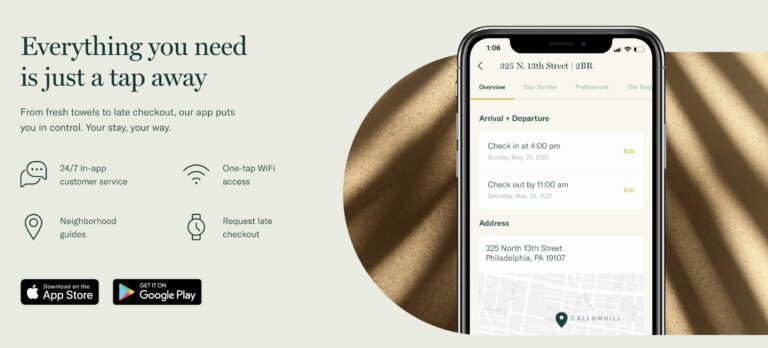
The benefits of adopting Sonder technology
Sonder-style hotels let managers control all aspects of the booking, check-in, guest experience, check-out, management, maintenance, and housekeeping processes in one place. They can do so automatically and remotely, via a centralized, easy-to-use, personalized portal.
Guests can customize their experience by, for example, requesting late check-out or contacting staff within their convenient guest portal. This enables your team to instantly respond to concerns, boosting customer satisfaction, and ensuring guests feel taken care of throughout their stay.
You can also address security concerns, such as suspected unauthorized access, remotely and immediately, as well as change keycodes and other settings instantly via your manager’s portal. Changing keycodes also means housekeeping staff cannot enter when guests are inside.
Also, you can remotely check the status of a room so you can ensure it’s ready for your guests before they arrive. Plus, managers can remotely set the temperature and turn on lights before guests arrive to ensure the most welcoming experience. Equally, turning off heating and lights when guests leave can significantly reduce your energy bill.
Adopt a Sonder operating model to decrease your reliance on staff
By relieving pressure from the front desk, or even eliminating it entirely, Sonder properties offer a more streamlined, contact-free experience. Another added benefit of operating on this type of model is less dependence on staff.
When you operate on a model that gives your guests the independence and flexibility to check themselves in, you free up your staff to focus on tasks that can have a real impact on the guest experience.
Because when your employees aren’t bogged down with transactional responsibilities, like manual check-in and guest verification, they’ll have more time to meaningfully interact with guests. That means they can build rapport with guests by providing concierge services and offering curated, personalized recommendations about the local area.
Fewer staff in a more efficient, leaner system also means lower costs and more profit, without passing higher costs on to guests. In fact, Sonder-style hotels can offer this level of modern security, safety, and ease of access at a significantly lower cost—just take Prague Residences as an example, a short-term rental and hotel operator that started saving $10,000 per month when they adopted contactless processes.
As Sonder co-founder and CEO Francis Davidson told Skift:
“The fact that hotels still have a person typing in who-knows-what when you’re checking in at a hotel is a complete joke. On everything from mobile keys to smart locks and housekeeping management, it’s really laughable how far behind the hotel industry is from a tech perspective.”
Francis Davidson-Tanguay
CEO OF SONDER
What’s Sonder’s secret? Automation, automation, automation
So how can you actually implement the Sonder business model? With smart tech that allows for hotel check-in automation.
In fact, despite often being described as an “apartment-hotel company,” Sonder actually refers to itself as a tech firm, given its focus on streamlined, highly advanced systems.
“A huge part of us having a competitive edge over a typical hotel is that we rethink and automate many processes.”
Francis Davidson-Tanguay
CEO OF SONDER
By using smart locks that connect to a centralized operating system, you can provide digital check-in without losing visibility over who’s actually in each room, as well as build an in-app guest communication solution that gives your guests everything they need right on their mobile devices.
But if you don’t already have smart locks in place, you may be overwhelmed by the time and investment required to replace your existing locks and implement contactless check-in. However, there’s a solution out there that lets you bring all your existing locks online and integrate them with the rest of your tech stack.
First, though, let’s take a closer look at the potential barriers to implementing automated solutions and operating like Sonder.
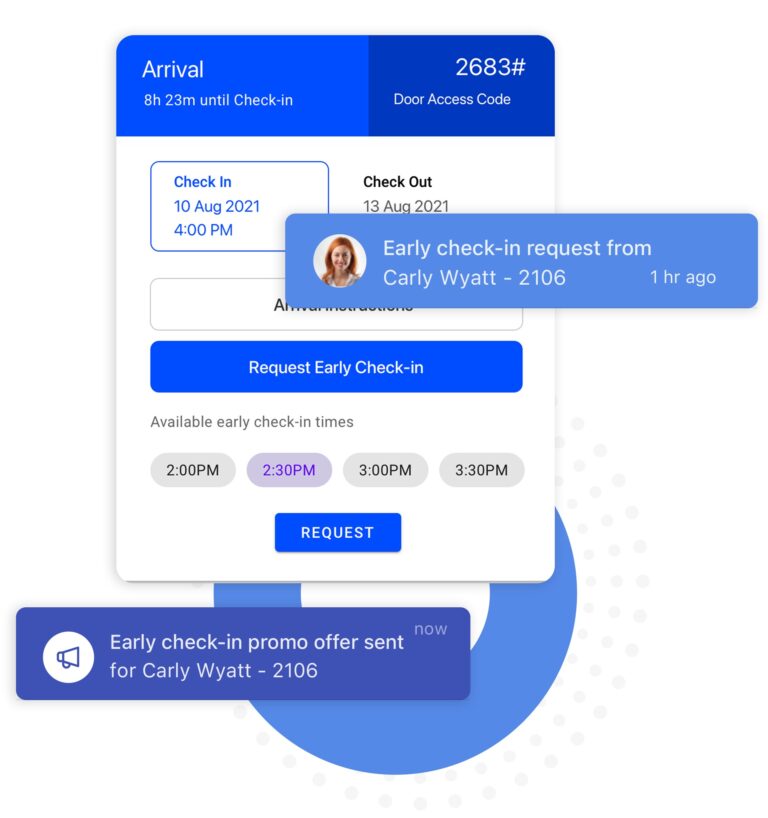
Barriers to adopting the Sonder model
In the long run, adopting a Sonder model can significantly reduce your hotel’s labor costs and streamline your hotel management and operations. But we understand that you can’t wave a magic wand to automate your processes.
The main challenge to adopting a Sonder operating model is building the right tech stack. Sonder’s technology allows hotels and short-term rental operators to offer seamless contactless check-in, 24/7 communication, enhanced security, and in-unit smart tech.
That means you’ll need tools like smart locks, a guest portal, and a guest messaging platform. You also need to centralize the management of these tools together under one roof so you don’t have to be constantly jumping between various apps and tabs.
So to enjoy the benefits of a Sonder model, you need both the right technology and an understanding of how to properly integrate it.
Software that can help you mirror the Sonder operating model
Take a look at four essential elements of the Sonder model and how you can implement them into your existing tech stack: Smart locks, guest hospitality platform, automated staff scheduling, and in-room smart devices.
Smart locks
A Sonder operating model is impossible to achieve without a smart lock that allows for digital check-in. As we mentioned, you may be worried about the barriers to entry for this type of tech solution. Fortunately, there’s a way to provide keyless access without having to replace your existing locks.
With Operto Boost, you can upgrade your old locks without having to completely overhaul them. The system works by modifying your existing locks and outfitting them with powerful BLE functionality so you can offer your guests digital check-in and get rid of your front desk.
Operto Boost allows you to update your locks within minutes, and it is compatible with most hotel door locks on the market. Plus, your locks maintain their original RFID or magstripe capabilities, so you can still offer physical keycards to guests who request them.
Guest hospitality platform
If you offer your guests contactless access, they’ll need a way to check in digitally. That’s where a guest hospitality platform can help. For example, Operto Guest lets you automatically share access codes or mobile keys and other helpful information with guests via a branded mobile-optimized web app.
Using the Operto Guest app, your customers can gain access to their rooms, find key information about your hotel and the surrounding area, explore relevant services and upsells, and seamlessly communicate with your staff.
Automated staff scheduling
According to a 2022 study conducted by Sonder, 66% of Americans reported that the cleanliness of their accommodations has become more important in recent years. If you want to ensure you never miss a clean or maintenance task, implement automated staff scheduling.
Operto Teams lets you automate task scheduling, easily track issues, and receive real-time alerts about the status of your rooms. Plus, it integrates with a range of PMS and channel management solutions, meaning the platform does all the work for you, so no complicated spreadsheets or outdated wall calendars necessary.
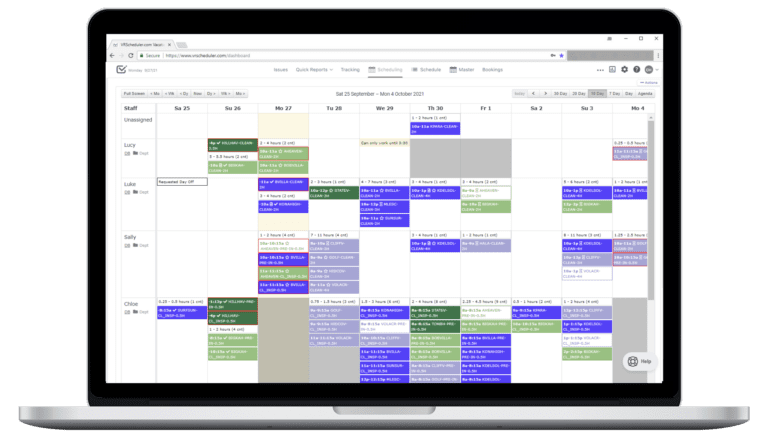
In-room smart devices
In-room smart tech helps you optimize guest comfort and risk management in your hotel business. Noise monitoring devices alert you to any parties or other disturbances, while with temperature and energy control you can automate heating and cooling based on the latest booking information from your PMS.
These solutions allow you to create a streamlined, frictionless experience for your guests while simultaneously smoothing out your operations through automation and reduced dependence on staff.
The Bottom Line
The cost of implementing a Sonder operating system doesn’t have to be prohibitive. In fact, a solution like Operto Boost lets you adopt contactless check-in without having to overhaul your existing locks. And Operto Teams gives you an automated staff scheduling system that easily integrates with your existing PMS.
Plus, the initial investment you make to upgrade your tech stack will pay itself off in lower staffing costs and repeat reservations from satisfied guests. Join the future of hotel management by adopting the Sonder operating model, and watch your business flourish thanks to smoother processes and delighted guests.
Ready to see Operto in action?
See why thousands of hospitality businesses trust our solutions to deliver exceptional guest experiences.
Latest News
Stay informed and inspired: discover the freshest blog articles, latest updates, and breaking news.


